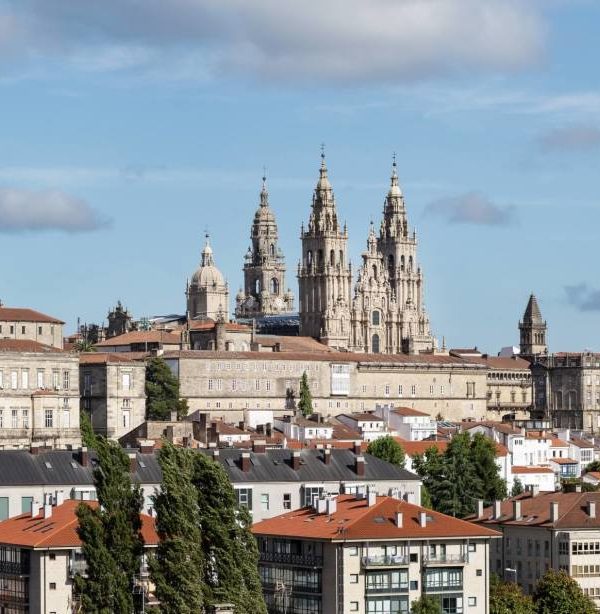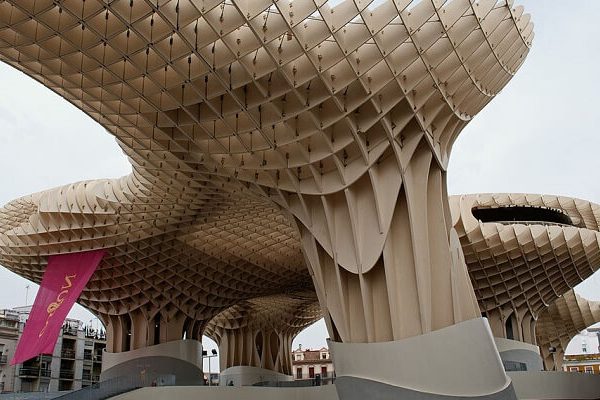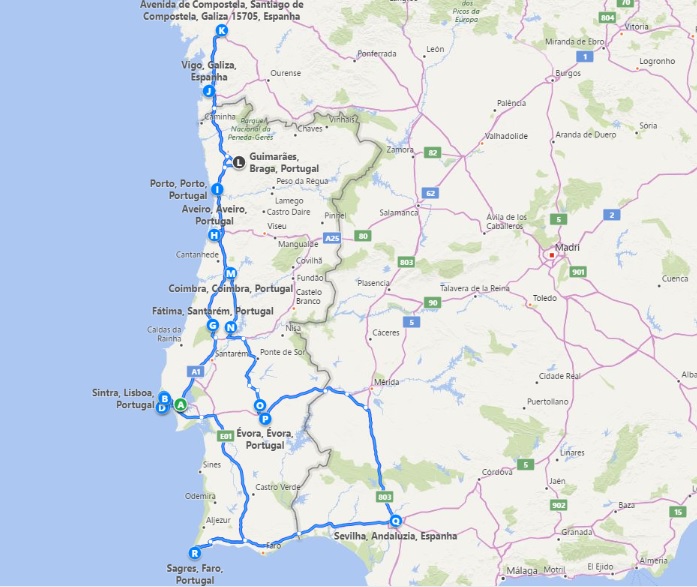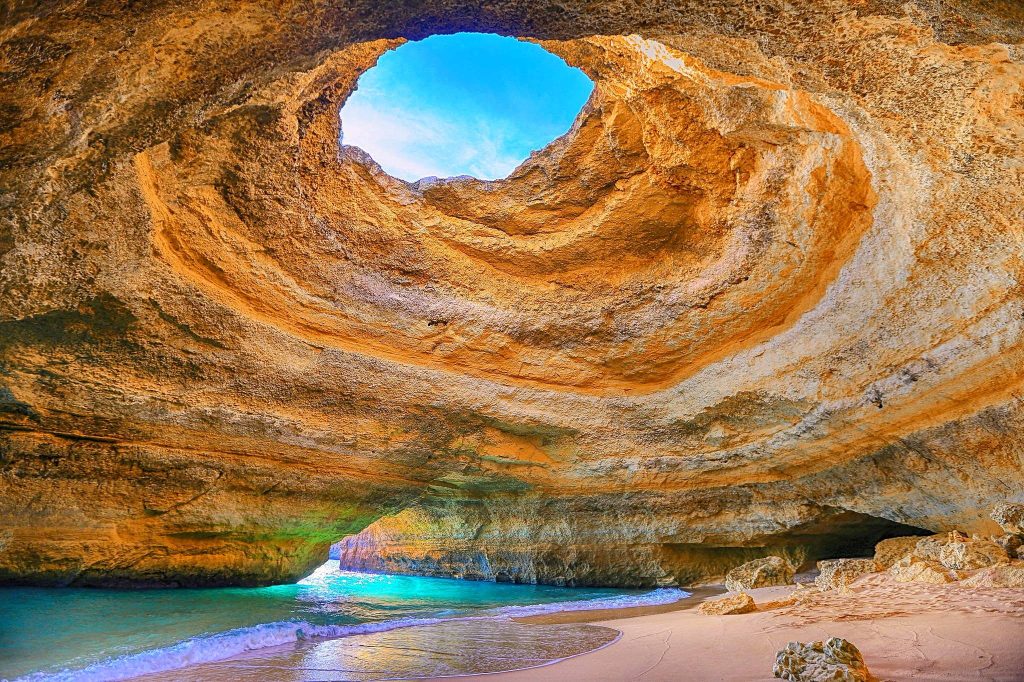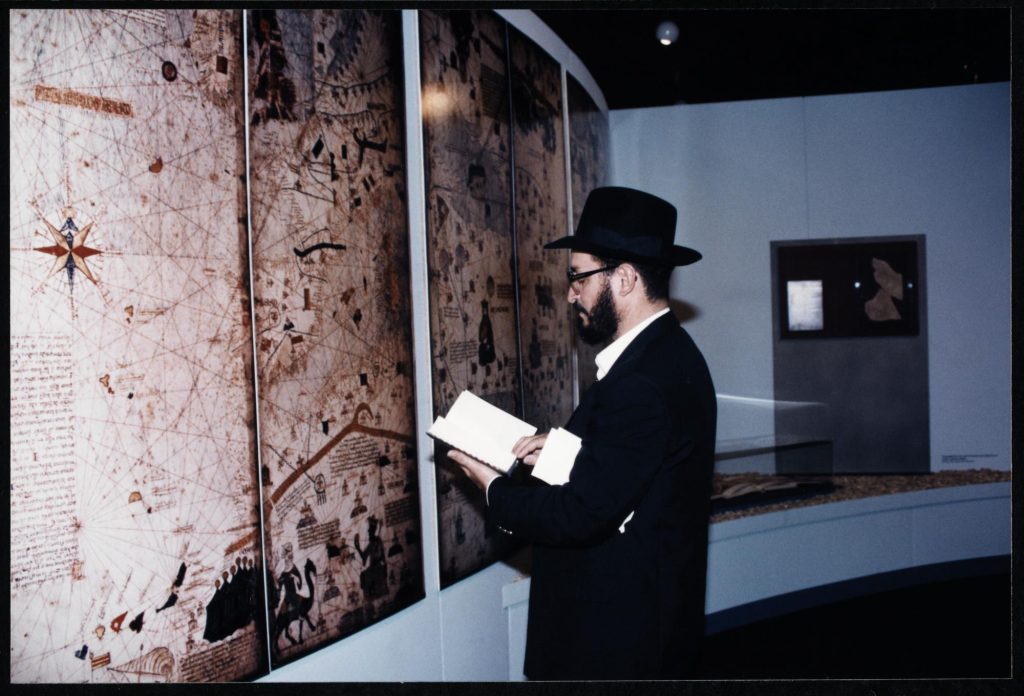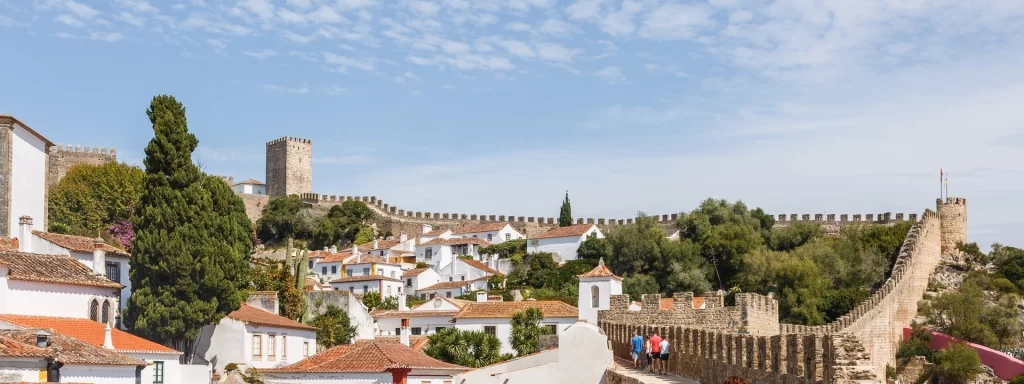Explore Portugal and Spain with Walkborder
Discover the best of our Portugal Spain Tour with Walkborder! These two neighboring countries, rich in culture, history, and gastronomy, offer a unique experience. In just one trip, you’ll have the chance to explore Portuguese charm and Spanish vibrancy. Let’s see what makes this journey so special!
This private Multiday tour will start and end in the city of Lisbon. If you have any questions, feel free to contact us.
🗓️ Pricing:
| Number of People | Price | Price Person |
|---|---|---|
| 1 Person | 3700€ | – |
| 2 People | 3900€ | 1950€ Per Person |
| 3 People | 4150€ | 1383€ Per Person |
| 4 People | 4300€ | 1075€ Per Person |
| 5 People | 4400€ | 880€ Per Person |
| 6 People | 4650€ | 775€ Per Person |
| 7 People | 4900€ | 700€ Per Person |
| 8 People | 5150€ | 643€ Per Person |
Portugal Spain Tour: Rich Culture and Unique Similarities
Portugal and Spain share centuries of intertwined history. Despite their differences, they have many cultural connections. For example:
- Religion and Festivities: Both have deep Christian roots. The Semana Santa celebrations are breathtaking, both in Seville (Spain) and Braga (Portugal).
- Impressive Architecture: While Portugal stands out with its azulejos (tiles) and Manueline style, Spain enchants with Gothic architecture and Gaudí’s modernist masterpieces.
- Passionate Music: Portuguese fado stirs emotions with its melancholy, while Spanish flamenco brings energy and passion.
No matter what you prefer, there’s always something to captivate you.
Irresistible Flavors: Iberian Gastronomy
Get ready for a burst of flavors! Portugal and Spain offer delicious and unique dishes, yet share a love for fresh, simple ingredients.
- Similarities: Both rely heavily on olive oil and are masters at preparing seafood.
- Dishes to Try:
- In Portugal: Bacalhau (salt cod), Cozido à Portuguesa, and, of course, Pastéis de Belém.
- In Spain: Paella, Tapas, Tortilla Española, and the famous Jamón Ibérico.
And let’s not forget the wines! Savor Port wine in Portugal and Sangria in Spain.
Surprising Differences
Although they are neighbors, Portugal and Spain each have their own distinct personalities. Portugal is calmer, with cobblestone streets and a nostalgic atmosphere. Spain, on the other hand, is vibrant and full of energy, especially at night, with its lively fiestas and intense lifestyle.
This mix of contrasts makes the trip even more fascinating!
Itinerary
A full day dedicated to Lisbon, a city that mourned the departure of its sons in search of the New World, creating the melancholic music known as Fado. We’ll start by visiting the modern side of Lisbon: Parque das Nações, a successful example of urban revitalization. This area, which until 1998 was quite run-down, became one of the most pleasant places to live in Lisbon after the Expo 98 World Fair. If you have children, the Oceanarium is an excellent option. Next, we’ll explore the real Lisbon: its historic neighborhoods such as Alfama, Bairro Alto, and Chiado. Based on your preferences and curiosities, we’ll adjust the itinerary, but we won’t miss Belém, where we’ll take a trip back to the 16th century to understand the Portuguese maritime expansion. To top off the day, we’ll indulge in a Pastel de Belém.
Our Portugal-Spain tour continues as we leave Lisbon for Fátima, stopping at the Sanctuary of Our Lady of Fátima. You can attend a mass and visit the Chapel of Apparitions, a site of great spiritual significance. The sanctuary also includes the Basilica of Our Lady of the Rosary, where the tombs of the three shepherd children and Sister Lúcia are located, as well as the impressive Basilica of the Holy Trinity.
Next, we’ll head to Aveiro, known as the “Portuguese Venice.” Enjoy the local restaurants, famous for their codfish, explore the Art Nouveau buildings, and visit the Aveiro market, designed by Gustave Eiffel. Don’t miss tasting the famous “ovos moles” and take a boat ride on a moliceiro before visiting the salt pans, which keep the salt production tradition alive.
This will be a more relaxed day, dedicated to Porto. We’ll visit the Clérigos Tower, the beautiful tiles of São Bento Station, and the charming Ribeira district, which “flirts” with Gaia across the river. We’ll also see the statue of Dom Pedro and visit Lello Bookstore, which inspired J.K. Rowling during her stay in the city where the idea for Harry Potter was born. Lunch will be your choice, with typical dishes like “tripas” and the iconic Francesinha sandwich. In the afternoon, we’ll visit a Port wine cellar for a tasting and end the day with a breathtaking view of Porto from the Serra do Pilar Monastery.
Today we’ll hit the road, leaving Porto towards the Camino de Santiago. We’ll make a brief stop in Vigo, where you can explore and, if you wish, have lunch. Rua da Pescadaria is an excellent suggestion, famous for its oyster sellers who serve fresh oysters from the Vigo estuary, traditionally accompanied by lemon and a glass of Albariño wine.
We’ll continue to Santiago de Compostela, a city with a serene atmosphere rich in history and culture. We’ll walk through its medieval streets, filled with music, art, and university students, as well as pilgrims sharing their journeys. The visit to the Santiago de Compostela Cathedral is a must, as tradition holds that it houses the tomb of the Apostle Saint James, the patron saint of Spain, making it one of the main Christian pilgrimage destinations in Europe since the Middle Ages.
🛌 – Overnight in Santiago de Compostela
Departing from Santiago de Compostela, we’ll head to Guimarães, the “birthplace of Portugal.” Here, we’ll explore its historic center, highlighting the Guimarães Castle and the Ducal Palace, key sites in the beginning of the Portuguese monarchy. We’ll continue to Coimbra, with a stop in Mealhada, famous for its delicious roast suckling pig. In Coimbra, we’ll visit the oldest university in Portugal, including the stunning Joanina Library, the Chapel of Saint Michael, and the Great Hall of Acts. A day rich in history and culture, showcasing the charms of two iconic Portuguese cities.
On the seventh day of our Portugal-Spain tour, our first destination will be Tomar, a city that welcomed the Templars and later the Order of Christ after the Templars’ downfall by the Church and King Philip IV of France. The visit to the Convent of Christ is essential to understanding the role of the Templars in the formation of Portugal and the Order of Christ in maritime expansion. We’ll also visit the Church of Santa Maria do Olival, the headquarters of the Templars in Portugal and a Gothic monument that houses the tomb of Gualdim Pais. Next, we’ll head to Arraiolos, known for its tradition of producing hand-embroidered rugs, with a possible lunch stop in the village before arriving in Évora.
This day will be dedicated to exploring Évora and its surroundings. We’ll start with a visit to a cork factory just a few kilometers from the city, where we’ll learn about the entire process, from the cork oak tree to the extraction and production of cork. We’ll then explore the main sights of this medieval city, including the Temple of Diana, the Cathedral, the Church of São Francisco, and the intriguing Chapel of Bones, whose walls are lined with human bones and has the famous inscription at the entrance: “We bones that are here, await yours.” Fascinating, isn’t it?
Optional: We could visit a local winery, as this region is one of the main wine producers in Portugal.
Today we’ll travel to Seville, the capital of Andalusia. We’ll start with a visit to Maria Luisa Park and its stunning Spanish Pavilion. We’ll then visit the famous Tobacco Factory, the setting for Georges Bizet’s opera Carmen, which now houses the university. We’ll also see the Torre del Oro, the Guadalquivir River, the Maestranza Bullring, and the charming Santa Cruz neighborhood, essential stops in the city. Seville flourished with the discovery of the Americas, experiencing its “golden age” with the wealth that flowed in from the New World, which led to the construction of landmarks like the Cathedral and the Casa de Pilatos. During the Counter-Reformation, the city became a religious center, with 45 monasteries for friars and 25 for nuns by 1671, a scene strongly represented during Holy Week. In modern times, Seville hosted two major international exhibitions, in 1929 and 1992, reinforcing its cultural significance. In the evening, we suggest a flamenco show for a complete immersion in Andalusian culture.
🛌 – Overnight in Seville
On the final day of our Portugal-Spain tour, we’ll head back to Lisbon, with a visit to Faro, an important city with one of the most significant historical and cultural heritages in the Algarve. Faro has evidence of human occupation since the Paleolithic, and it flourished during the Roman occupation, which gave rise to the modern city of Faro. Explore its shops, cafes, bars, and restaurants, as well as its monuments and museums of great interest. The city also boasts beautiful old buildings, mostly from the 18th and 19th centuries, despite being looted and burned by the English in the 16th century and heavily damaged by the great earthquake of 1755.
Arrival in Lisbon.


